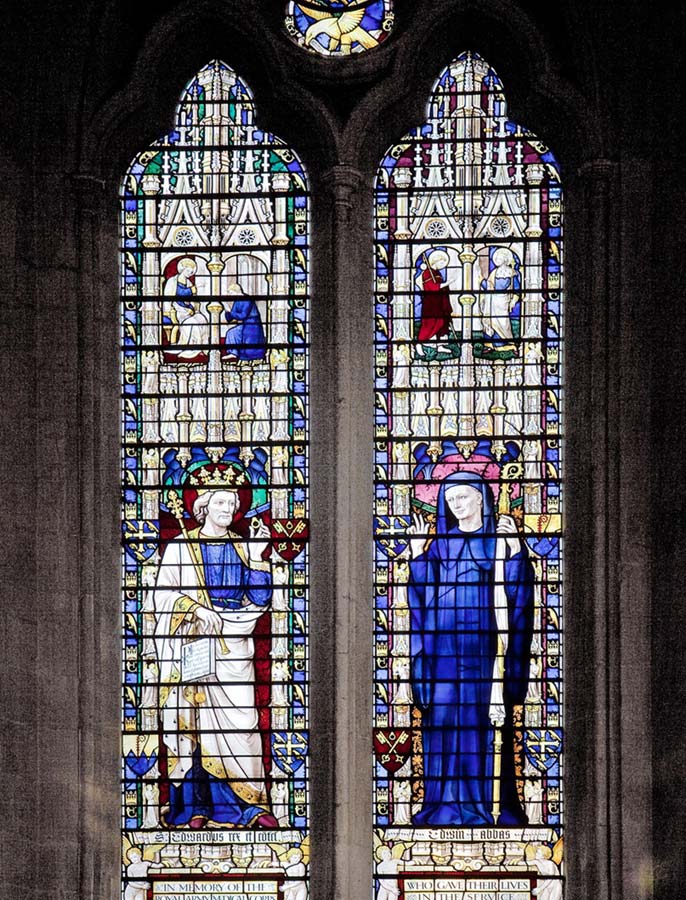In the north aisle of the nave of Westminster Abbey is a memorial tablet and stained glass window for those who died serving in the Royal Army Medical Corps in the 1914-1918 and 1939-1945 wars. The larger white marble tablet was unveiled on 13th July 1922 by the Duke of Connaught, Colonel in Chief of the Corps. It was designed by F.J. Wilcoxson. The inscription reads, below the regimental badge:
MCMXIV MCMXIX
ROYAL ARMY MEDICAL CORPS
In memory of 743 Officers and 6130 Warrant Officers, Non-Commissioned Officers and Men who fell in the Great War, and whose names are enrolled in a Golden Book placed in the Chapter House. "They loved not their lives unto the death"
Below on a small tablet, unveiled in 1987, is the inscription for the 1939-45 war:
And of the 437 officers and 2026 other ranks who gave their lives MCMXXXIX-MCMXLV
Rolls of Honour
The Golden Book was on display in the Chapter House of the Abbey for many years but now resides in a showcase in front of the memorial. This was illuminated by Graily Hewitt and his assistants. The decoration includes English trees, flowers, birds and butterflies, with St Luke and an illumination of the parable of the Good Samaritan at the beginning. The second volume covering the Second World War is simpler and was designed by M.C. Oliver. There is a third book, written by John A. Ross, recording post-war deaths which was dedicated in 1998.
For details on entries in the memorial books please contact the RAMC.
Memorial Window
The two light stained glass window was designed by J. Ninian Comper and unveiled on 22nd May 1927. It depicts figures of St Edward the Confessor and Edwin, abbot of Westminster and is part of a series of windows showing kings and abbots in this aisle. Above Edward's figure is a scene showing him 'touching for the king's evil'. The inscription at the base was altered to include those who died in the Second World War. This now reads:
In memory of the Royal Army Medical Corps of all ranks who gave their lives in the service of their country.
The original inscription ended "...who gave their lives in the Great War 1914-1919". Below this the names of the principal countries in which they served were inscribed ie. France, Flanders, Dardanelles, Italy, Macedonia, Mesopotamia, Egypt, Palestine, Africa, Persia, India and Russia. This panel was replaced by a second badge of the Corps during the alteration after the Second World War.
The badge and motto of the Corps appear at the bottom of each light with the Royal Arms and the Union Flag.
The medical corps, part of the British Army, can trace its origins back to 1660 when each Standing Regular Army had a surgeon. The Duke of Marlborough introduced "flying hospitals" during his campaigns in the reign of Queen Anne. During the Peninsular wars of the early 19th century the army medical services were more formerly organised. The Royal Army Medical Corps was formed in 1898.
Further reading
See also The Royal Army Medical Corps Book of Remembrance for names in all the rolls of honour
See also the website of the Army Medical Services Museum

This image can be purchased from Westminster Abbey Library
Image © 2024 Dean and Chapter of Westminster

This image can be purchased from Westminster Abbey Library
Image © 2024 Dean and Chapter of Westminster

This image can be purchased from Westminster Abbey Library
Image © 2024 Dean and Chapter of Westminster










